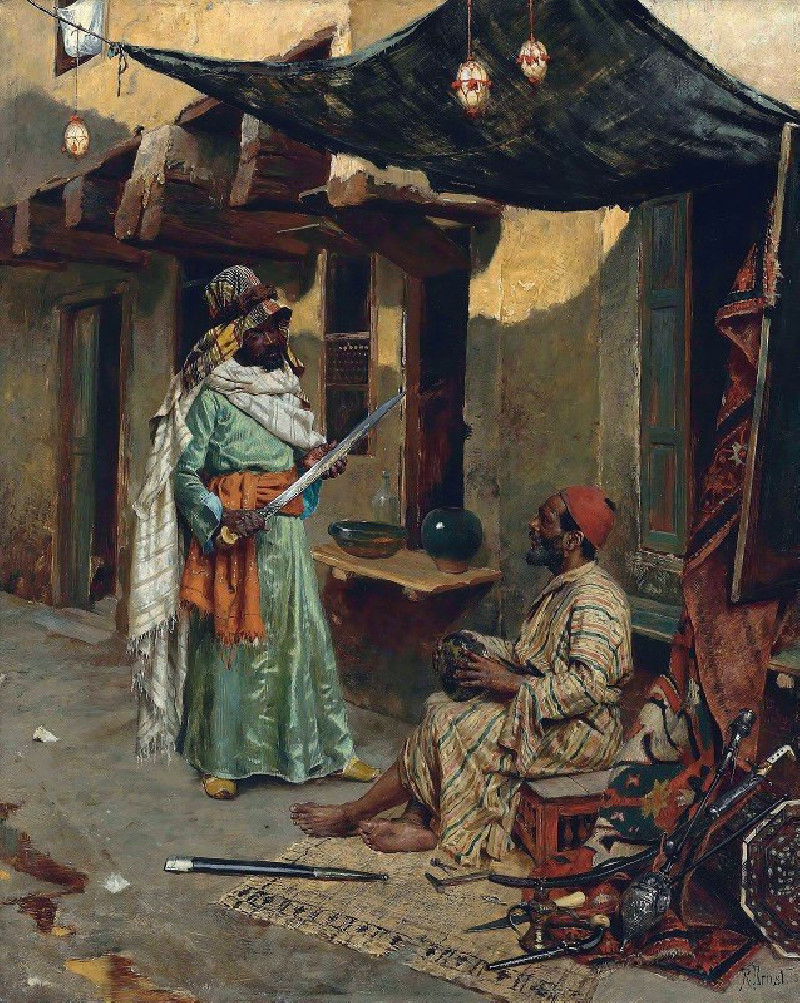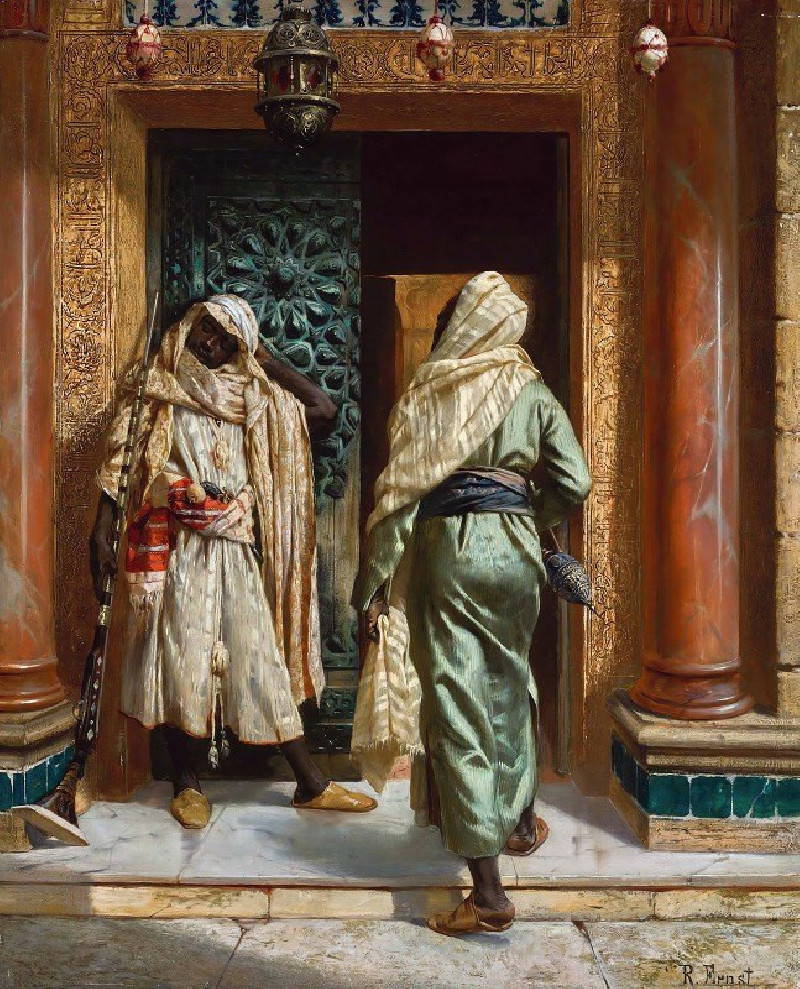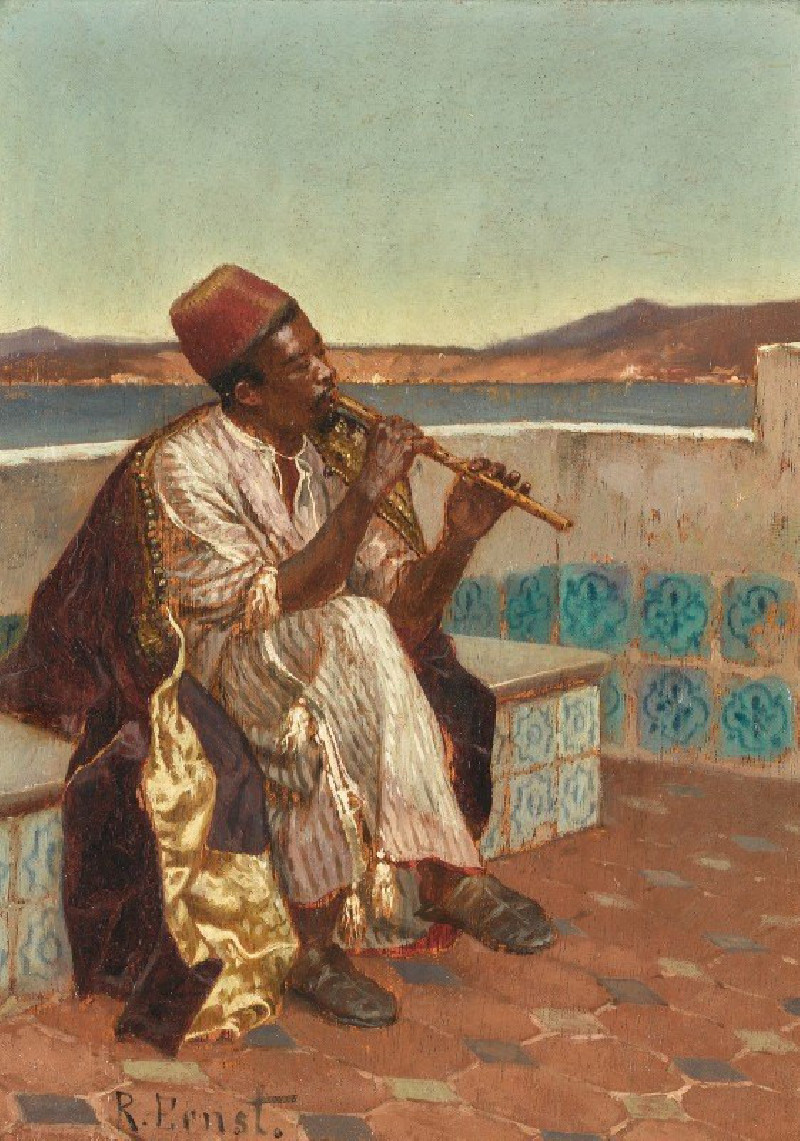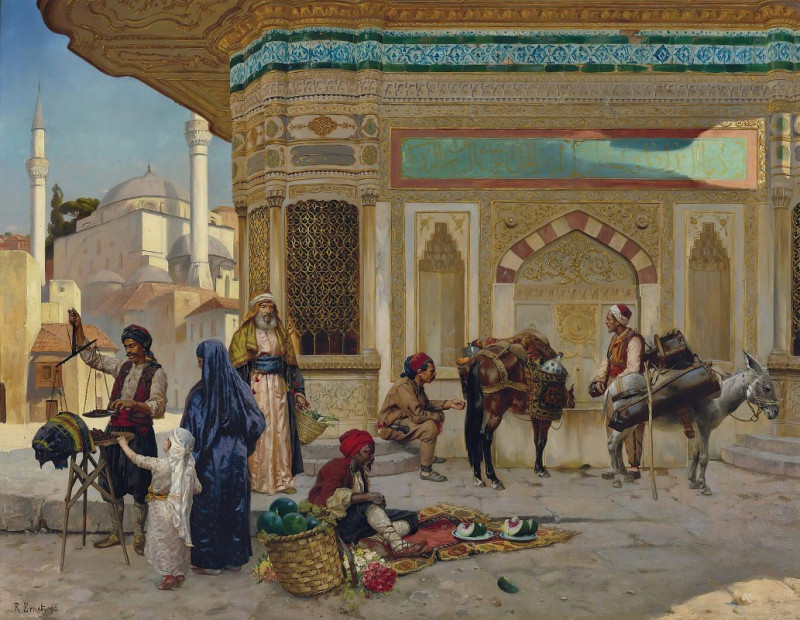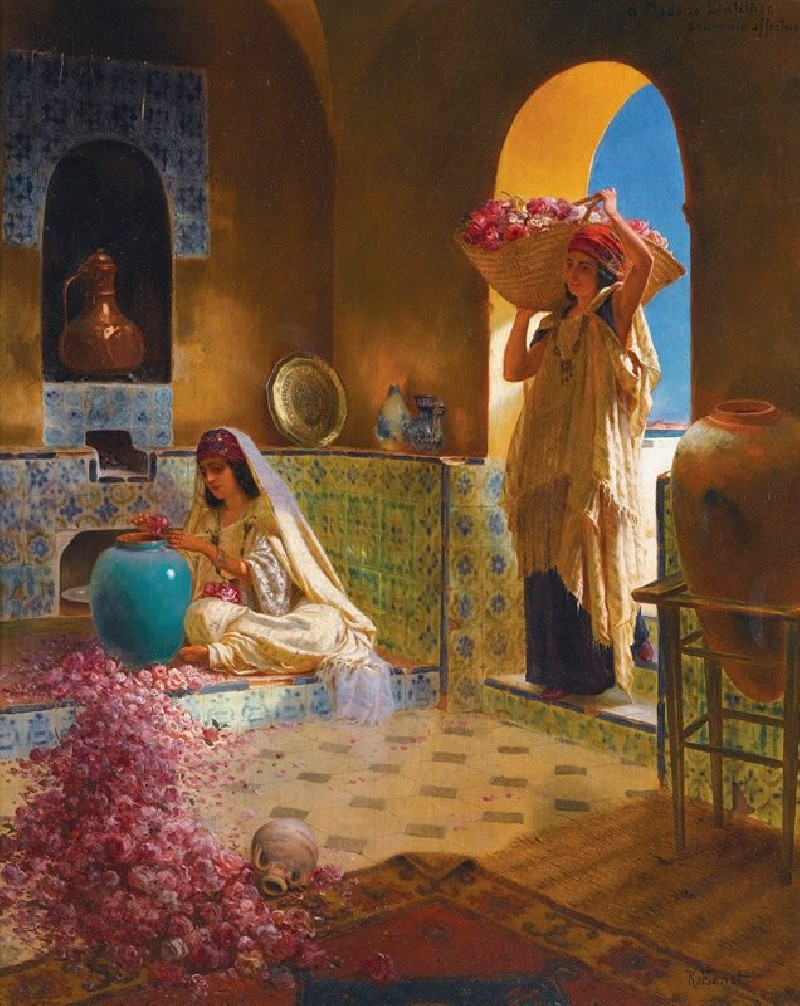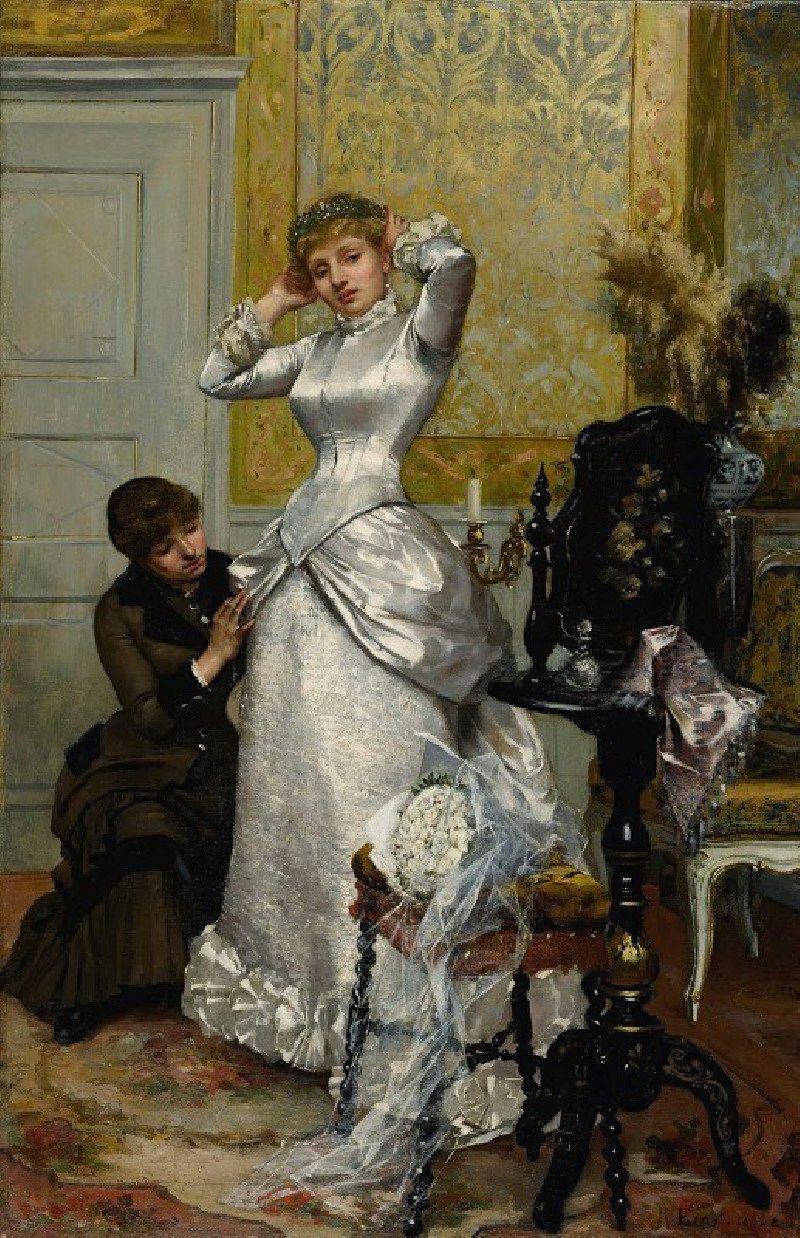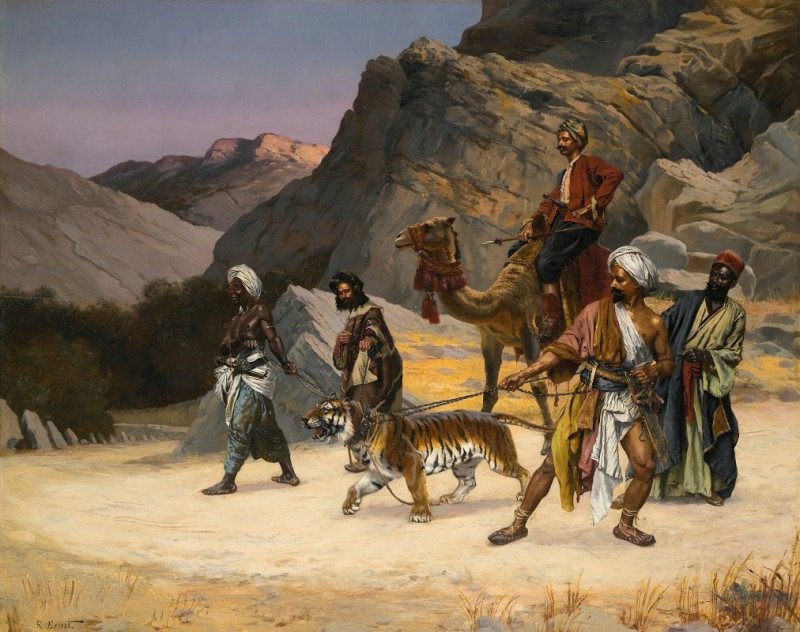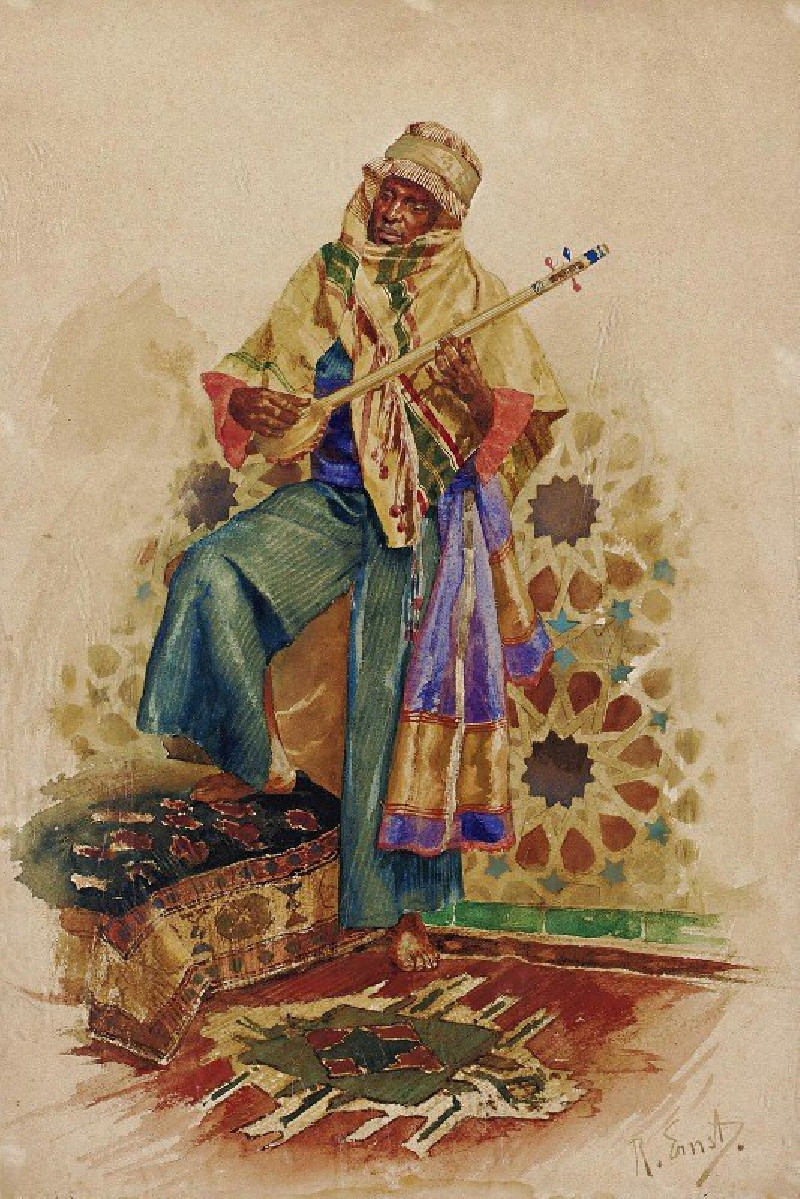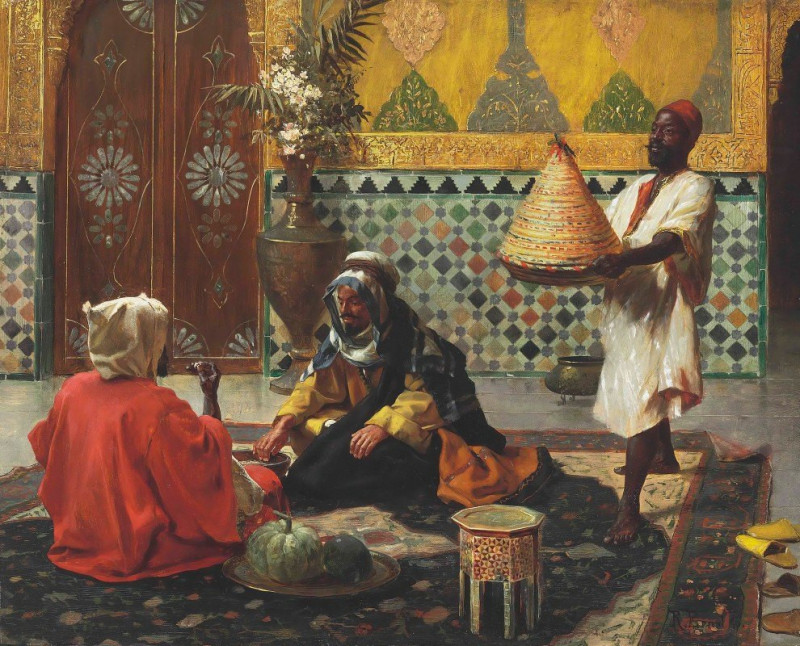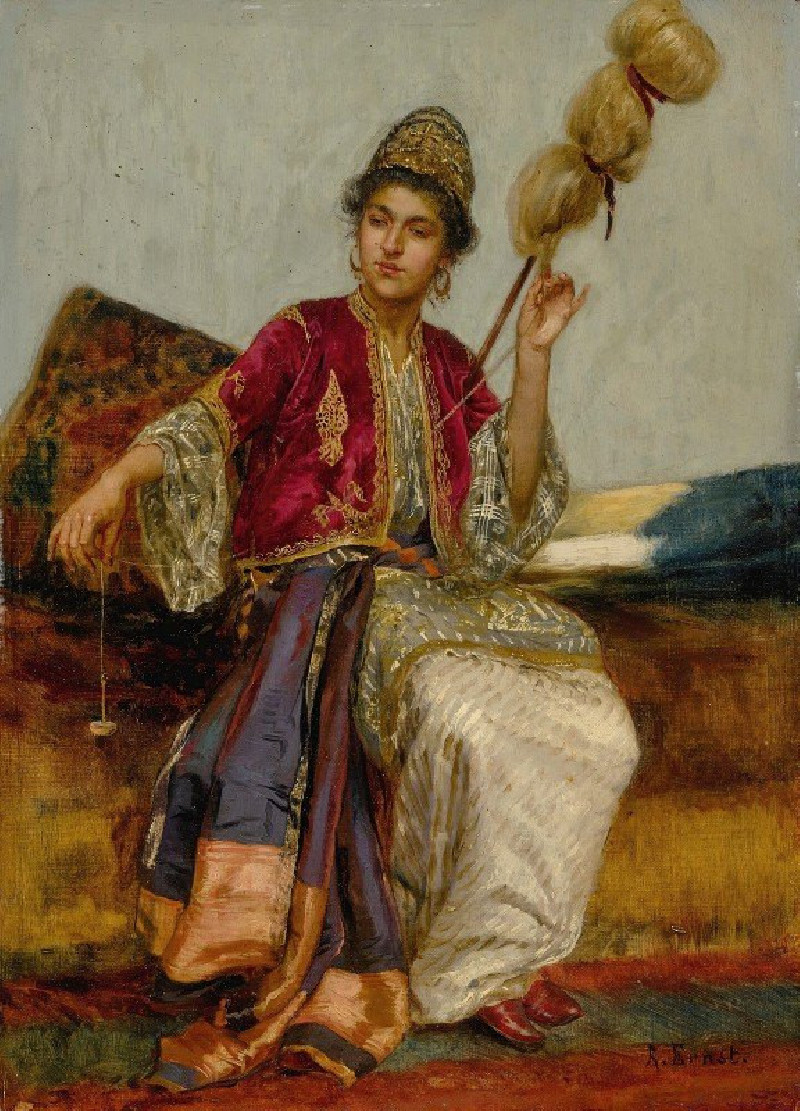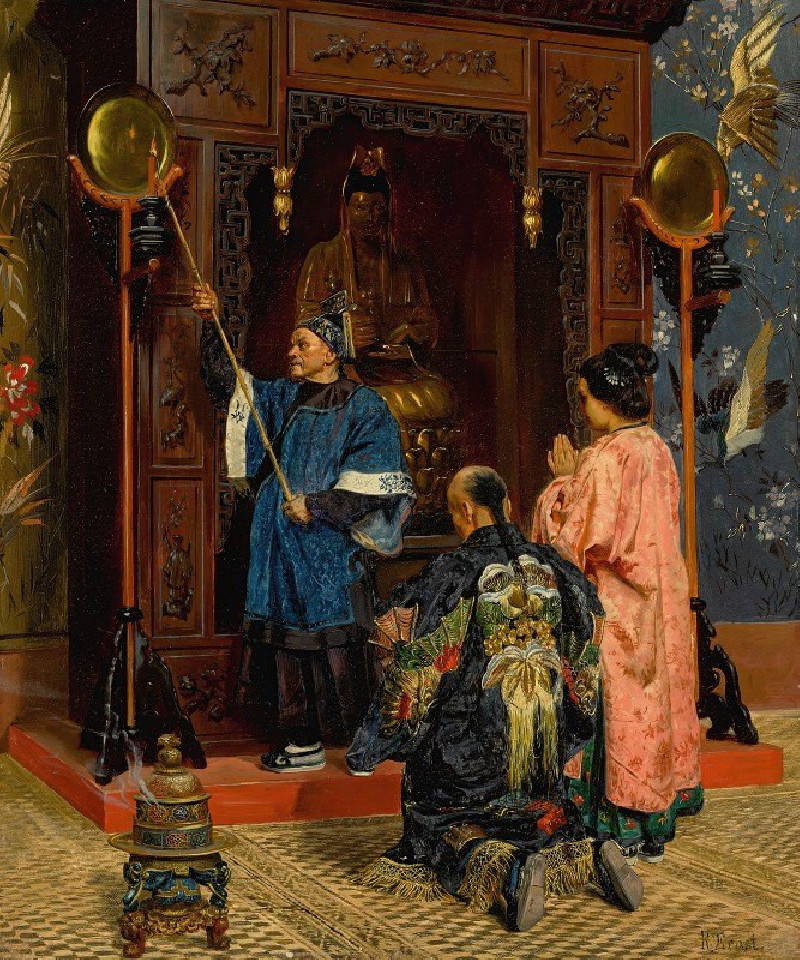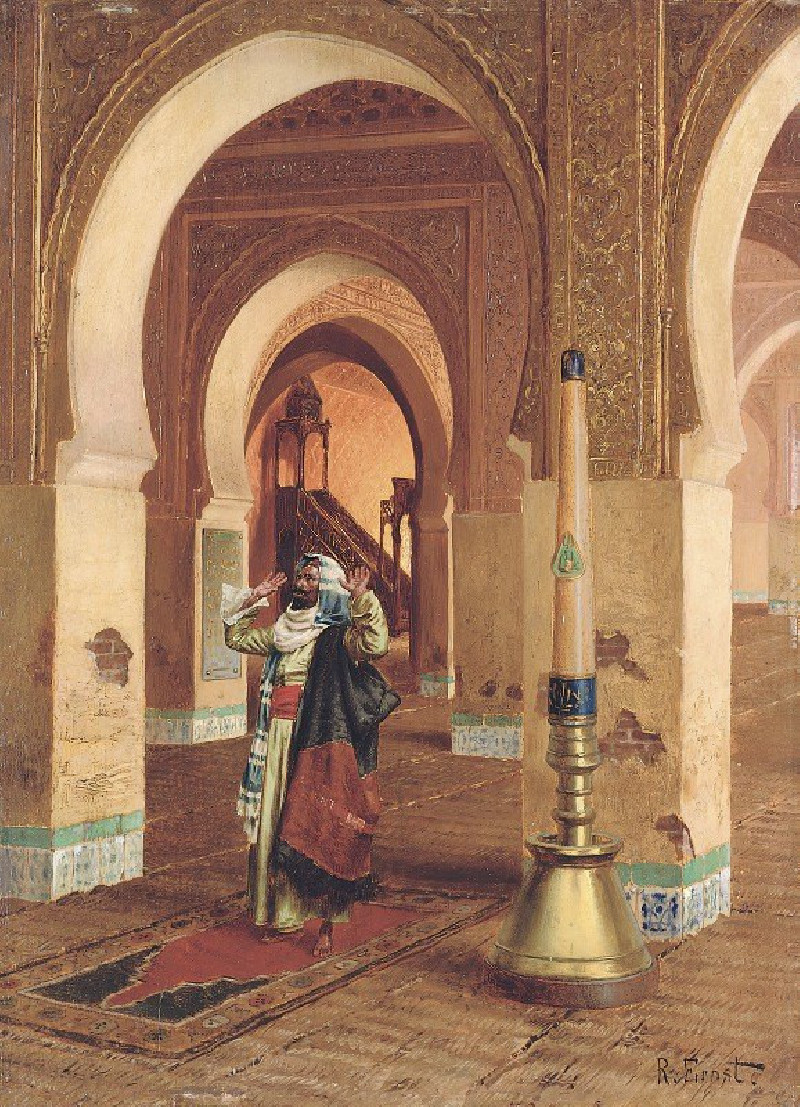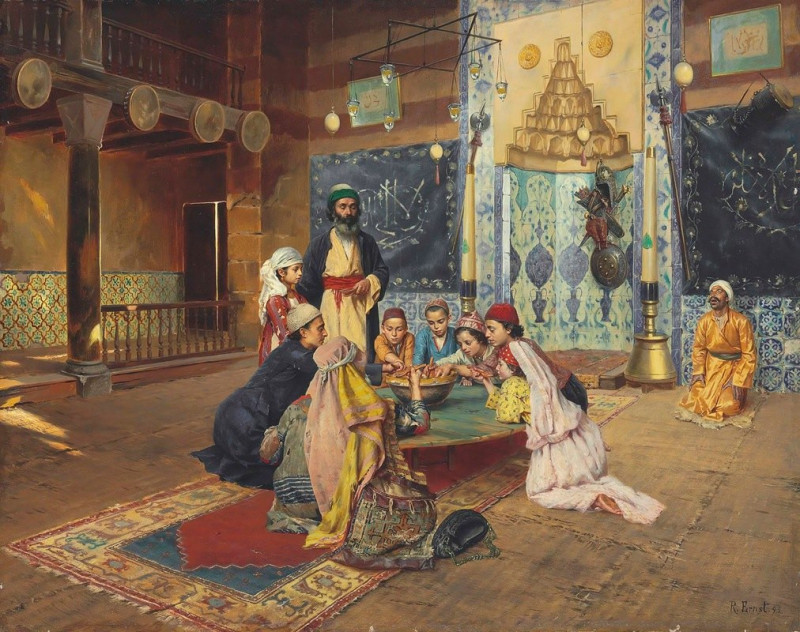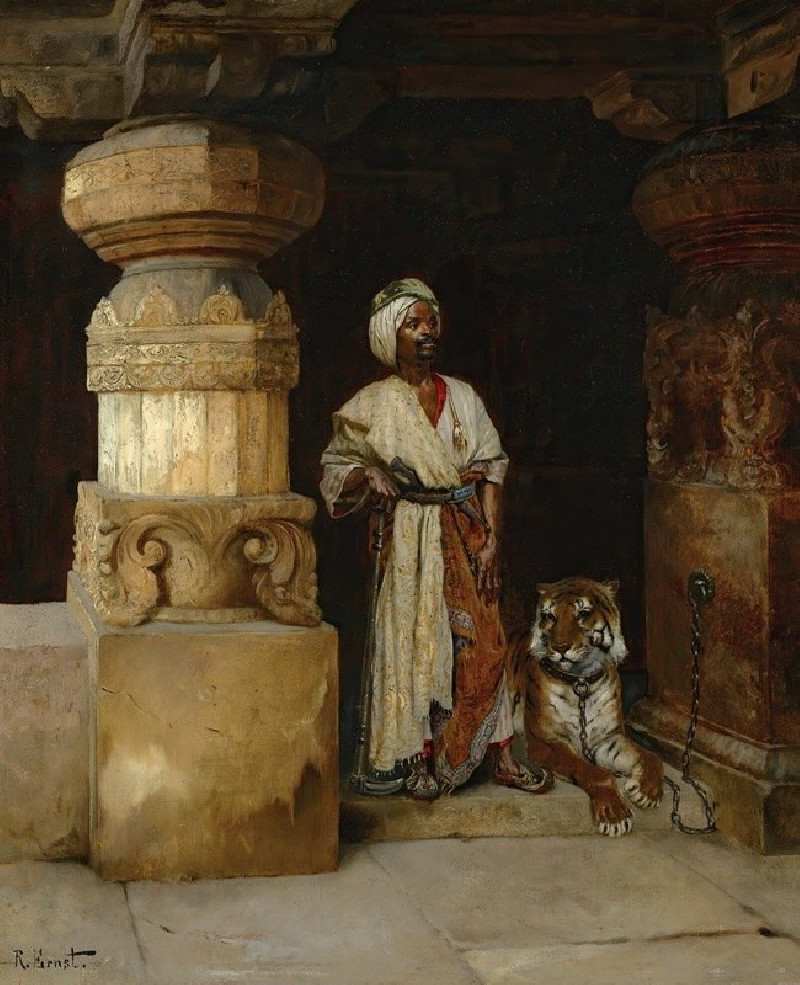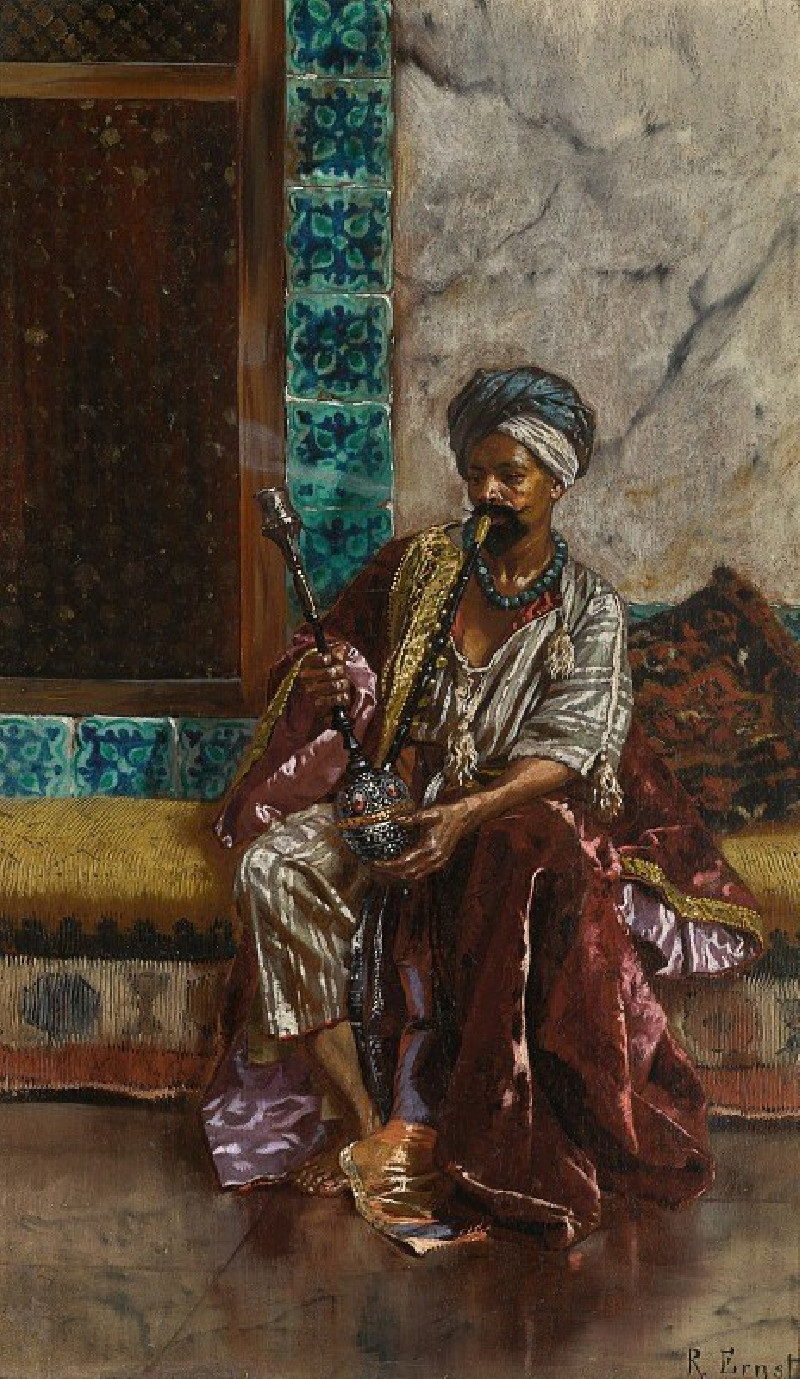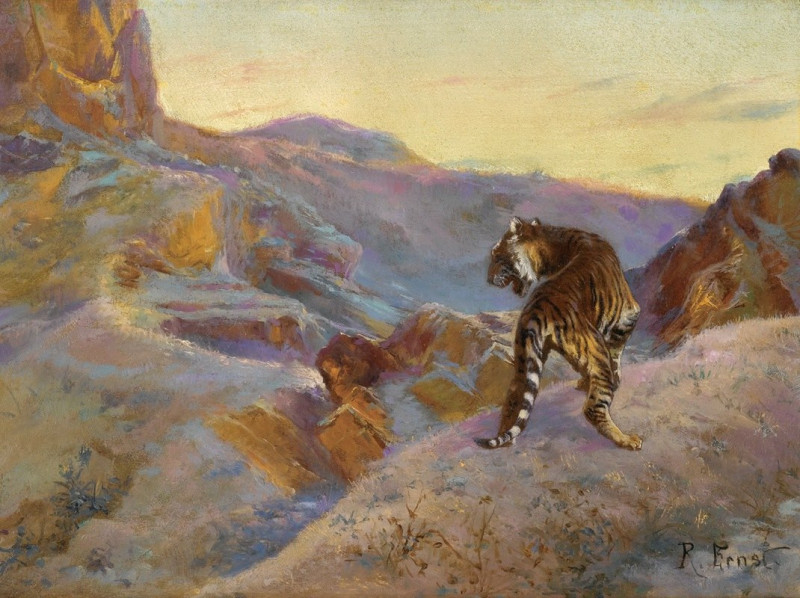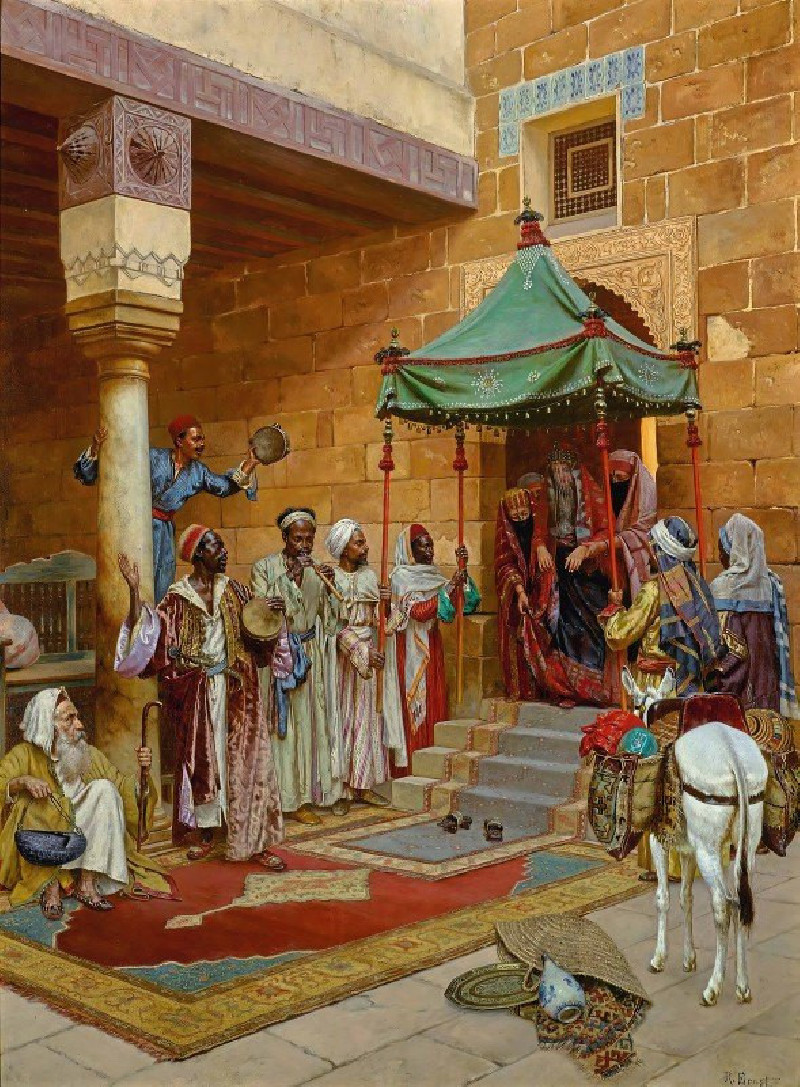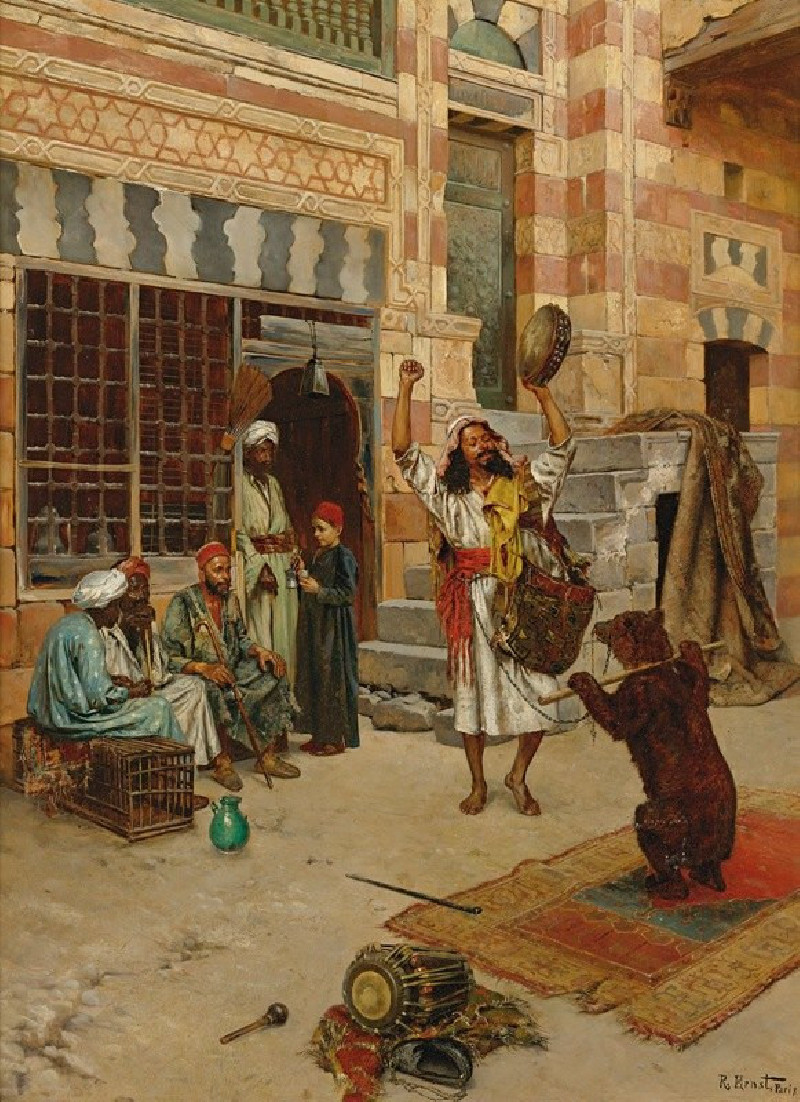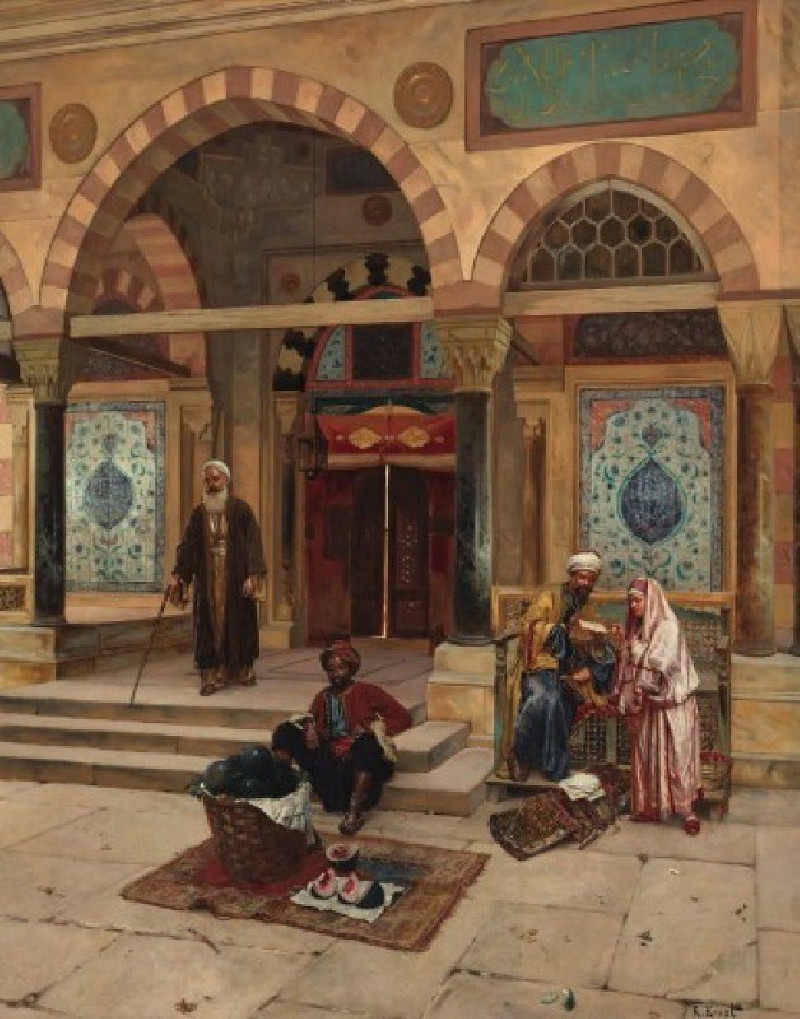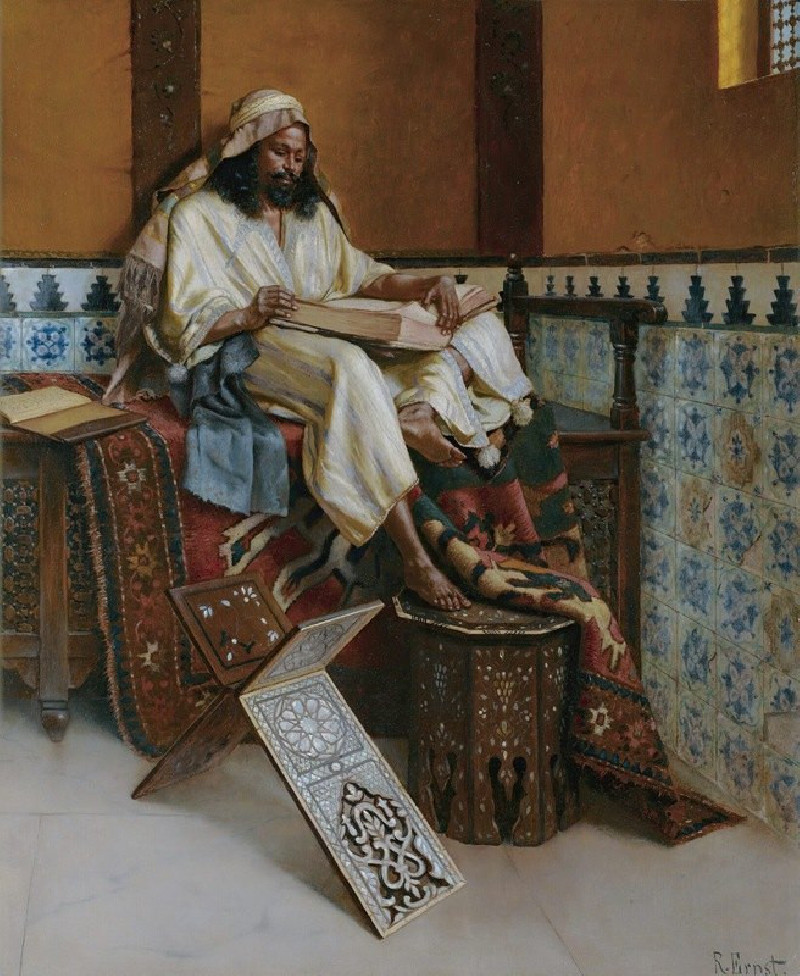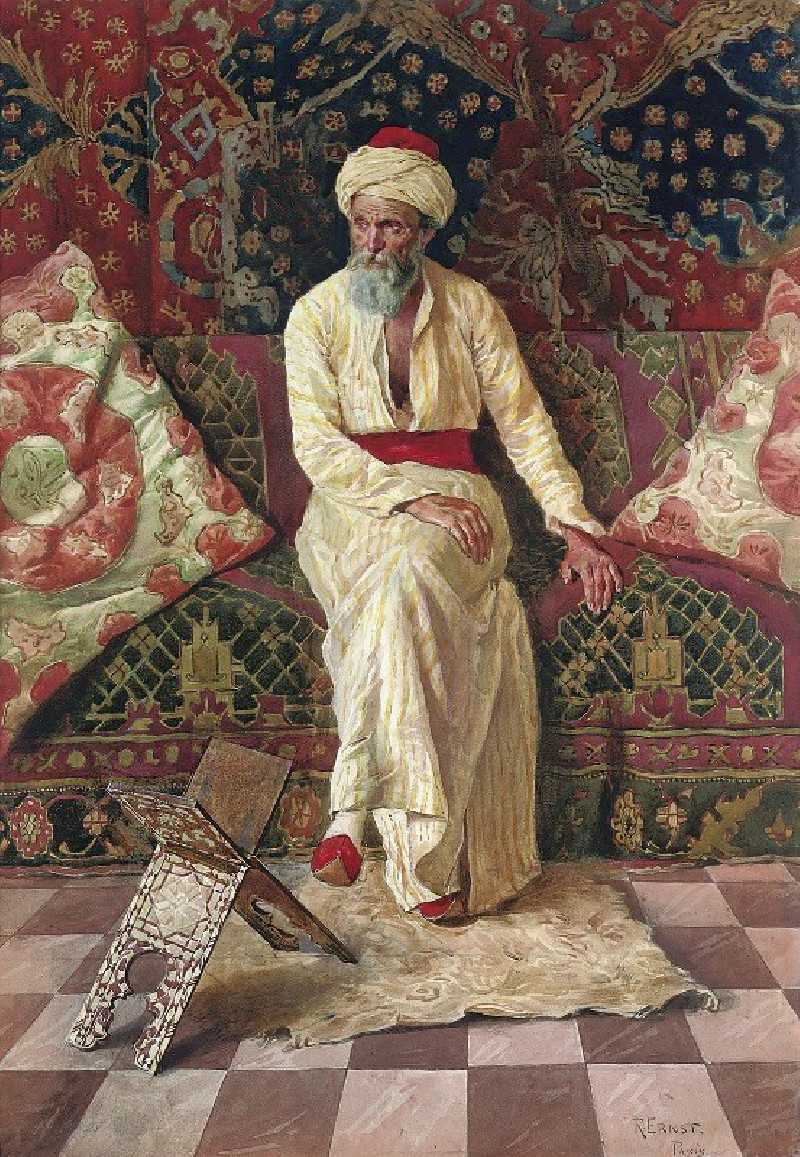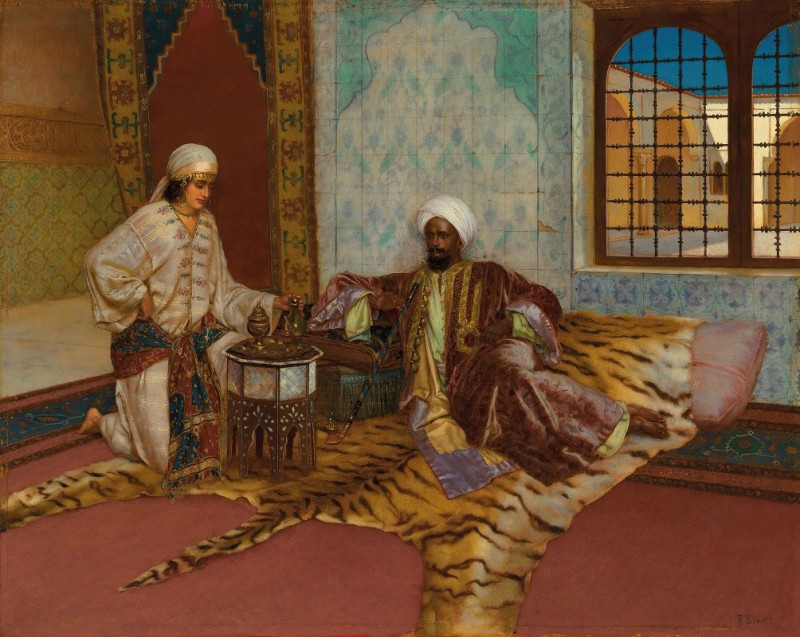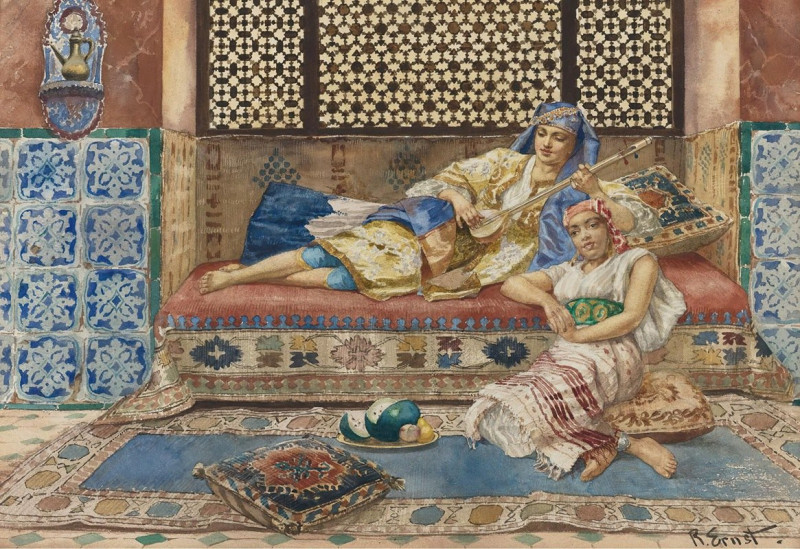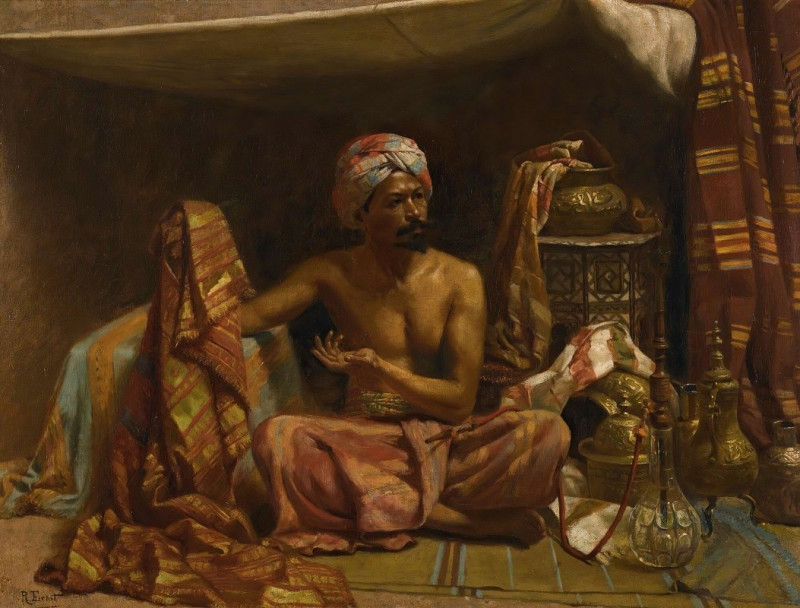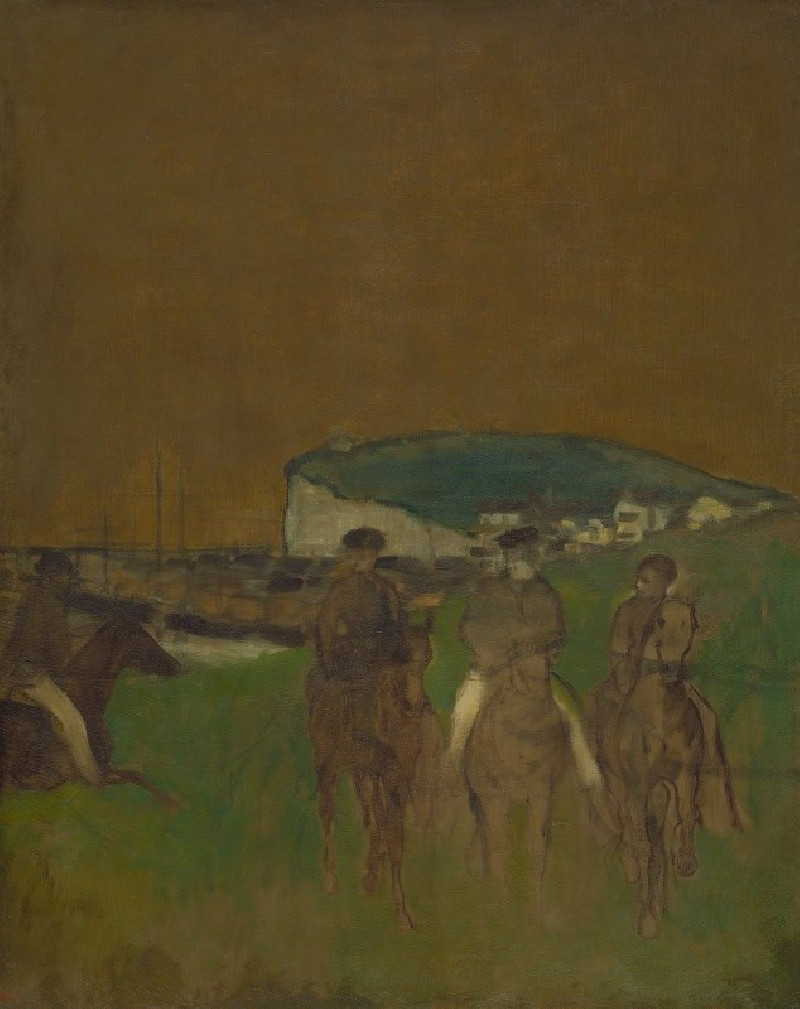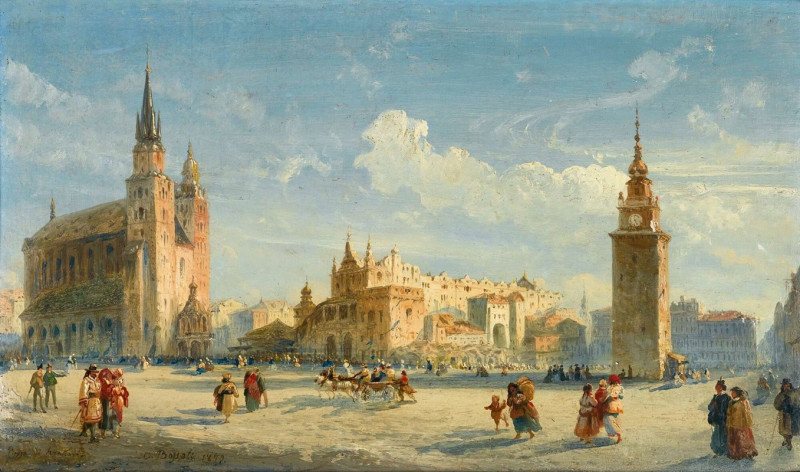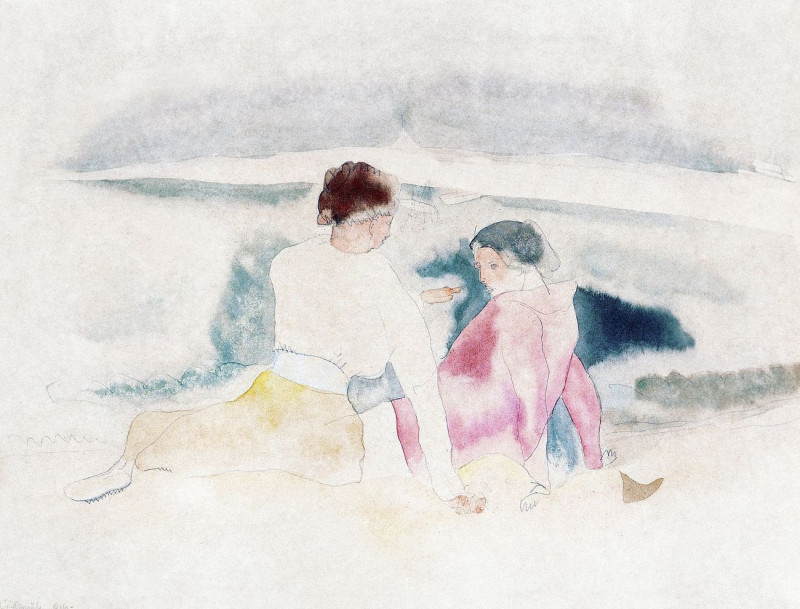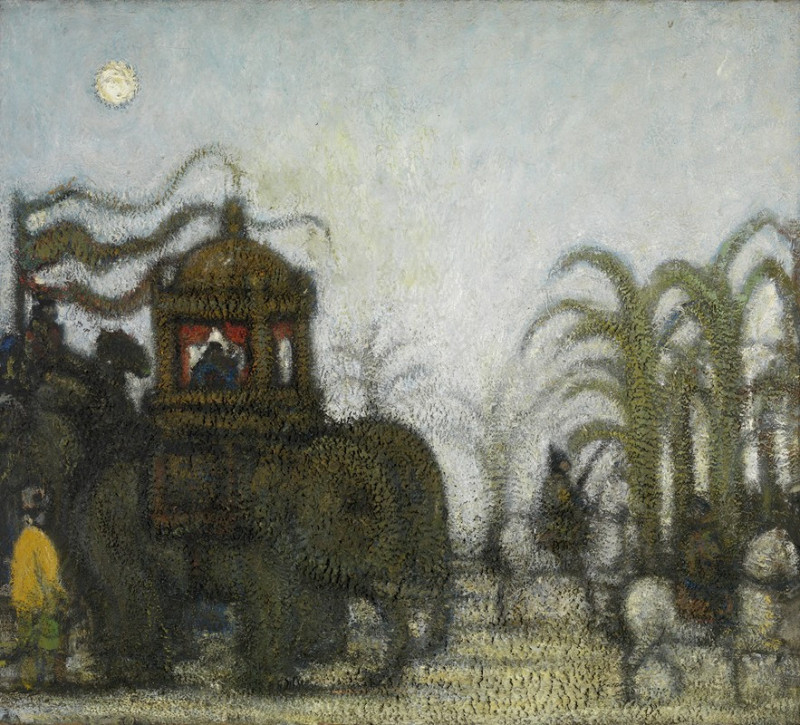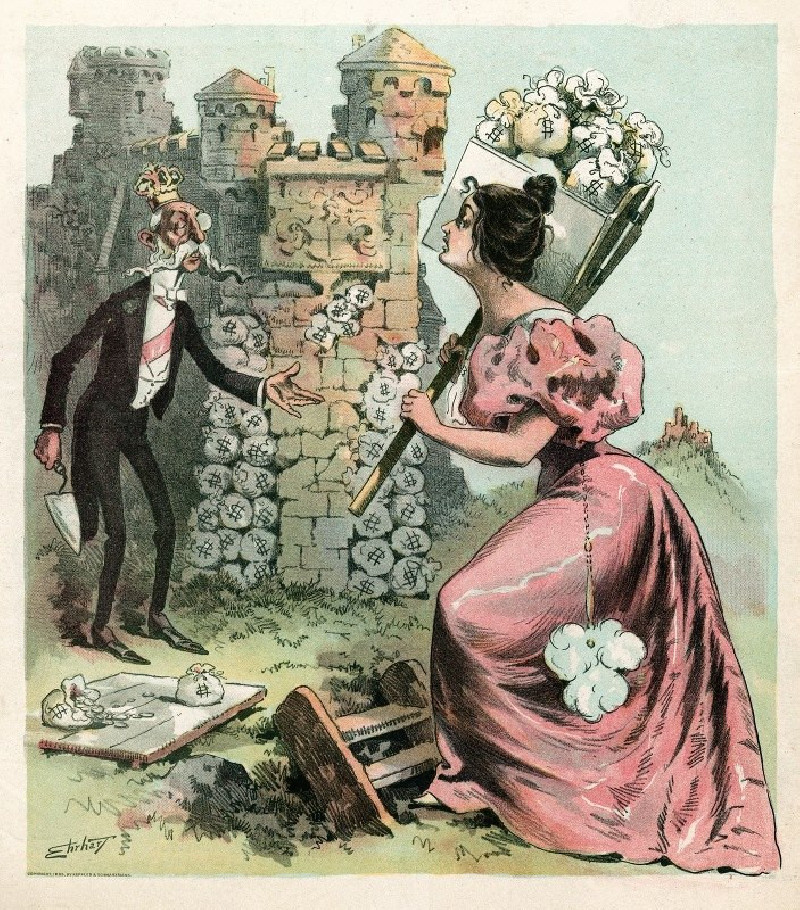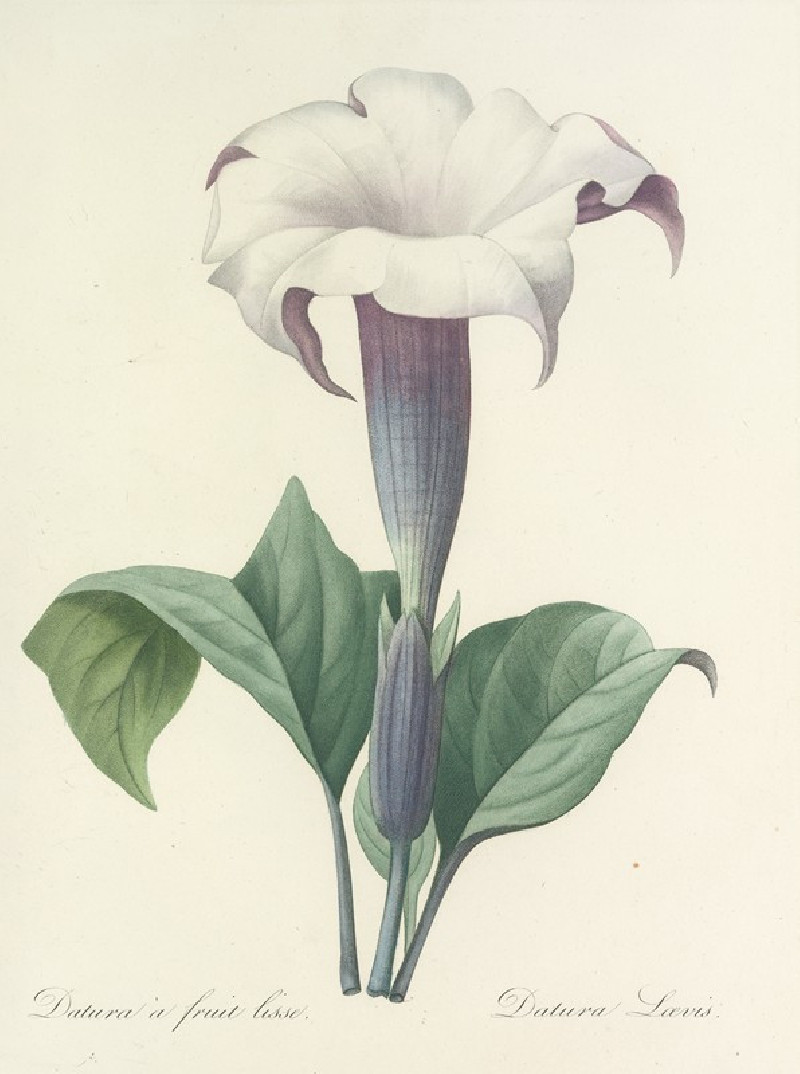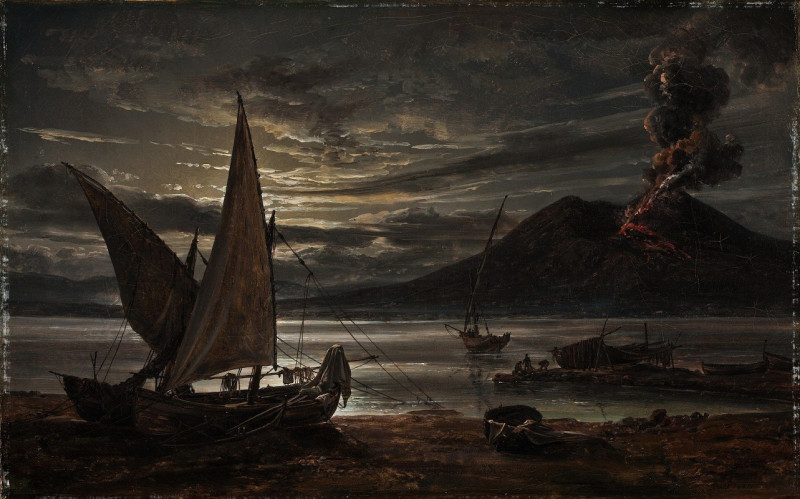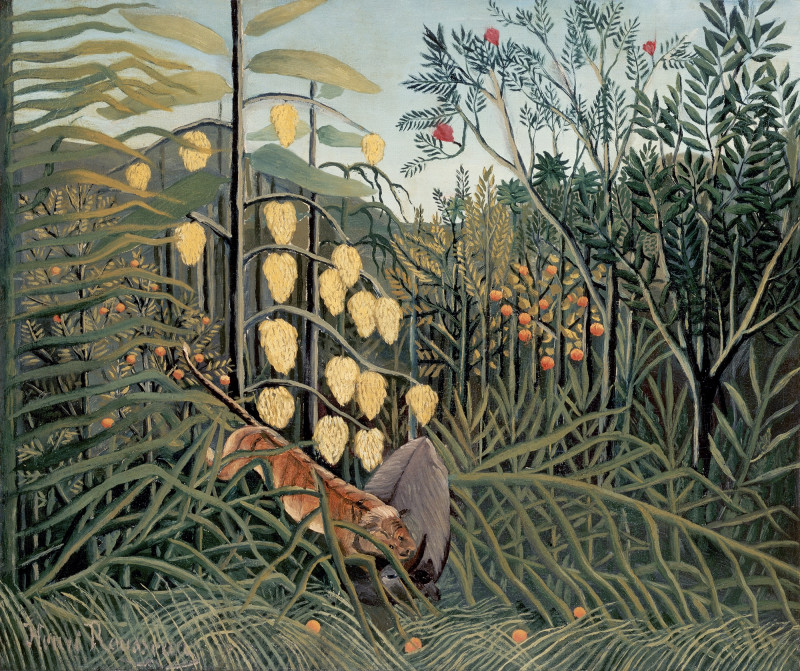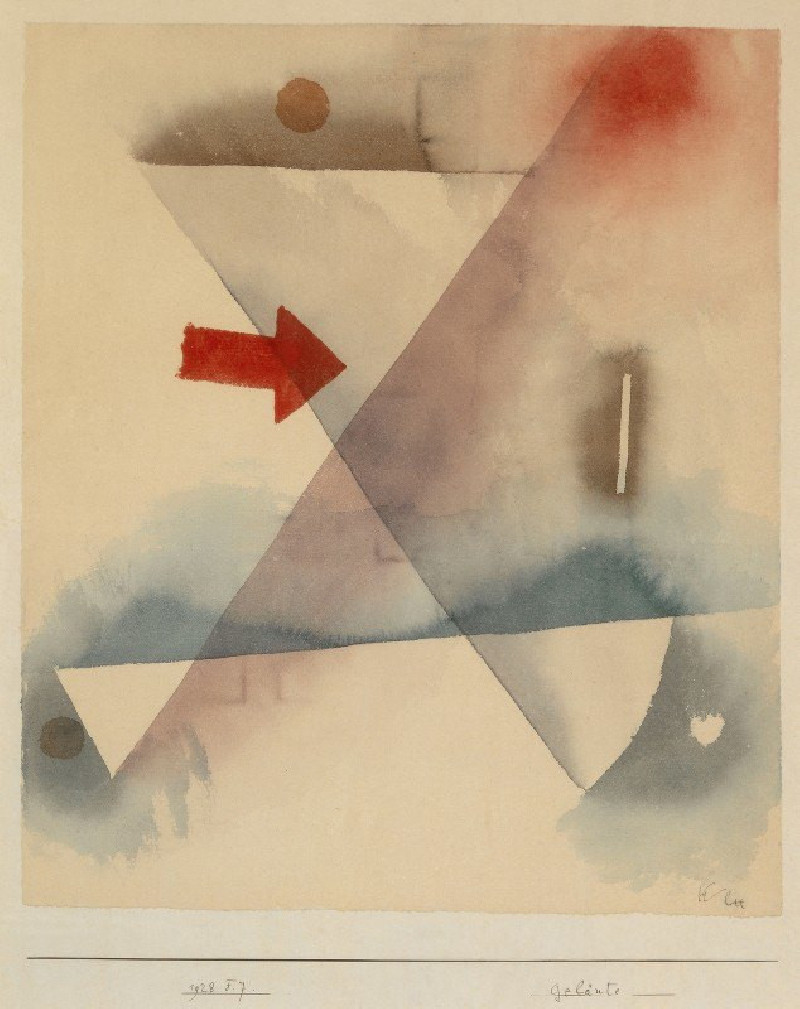The Arms Merchant (1885)
Technique: Giclée quality print
Recommended by our customers
More about this artwork
Artist:In this captivating painting titled "The Arms Merchant" by Rudolf Ernst, we find ourselves transported to a vivid scene likely set in the mystical area of North Africa or the Middle East. The artwork is rich with cultural depth and exquisitely rendered details that invite viewers to explore a moment frozen in time.The scene portrays an interaction between two figures in a rustic market setting. The central character, a merchant, stands holding a sword with exquisite craftsmanship. Dressed in a vibrant robe of blues, greens, and whites, and capped with a traditional headdress, he exudes an air of authority and expertise. The sword, catching the light, is the focal point of their discussion.Seated before him is another figure, presumably a potential buyer or a fellow merchant, who gazes at the sword with keen interest. His attire, simpler and striped, contrasts with the standing man’s, highlighting differences in their status or roles. Around them, an assortment of weaponry and armor lays scattered, suggesting the specialty of the merchant's trade.The environment adds a rich layer to the storytelling. The sun-dappled walls, wooden shutters of the shop, and a fabric canopy all contribute to an atmosphere that is distinctly of another time and place. Small hanging lamps and a glimpse into the shaded interior of the shop invite curiosity about what other treasures might be hidden within.Through "The Arms Merchant," Rudolf Ernst doesn't just create a visual spectacle; he encapsulates the essence of an era and a profession steeped in tradition, skill, and negotiation.
Delivery
Returns
Rudolf Ernst was an Austro-French painter, printmaker and ceramics painter who is best known for his orientalist motifs. He exhibited in Paris under the name "Rodolphe Ernst".
He was the son of the architect Leopold Ernst and, encouraged by his father, began studies at the Academy of Fine Arts Vienna at the age of fifteen. He spent some time in Rome, copying the old masters, and continued his lessons in Vienna with August Eisenmenger and Anselm Feuerbach.

